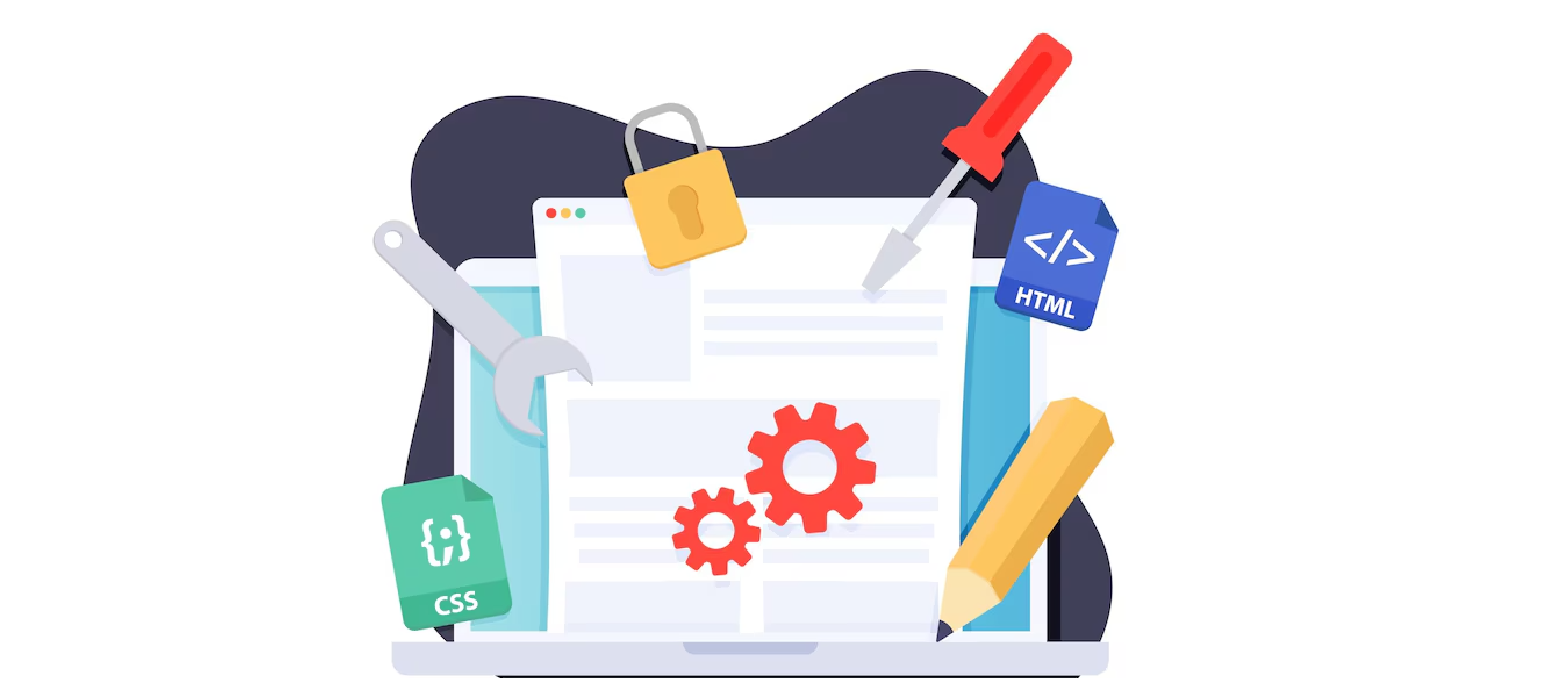The process of buying and selling goods and services is known as commerce. When the same thing is carried out with the help of the internet it is known as E-commerce. Ecommerce is just not limited to an activity of buying and selling, it is much more than this.
There are different types of Ecommerce websites that serve different purposes. The list of different types of ecommerce software solutions is given below:
B2B sites – These types of sites offer trading services only for businesses. One business firm buys and sells things from a different firm. The goods purchased are not consumed but are further sold to the final consumers.
B2C sites – Another type of site is B2C, in which goods and services are directly sold to the final consumer, no intermediaries are in between that’s why many B2C websites are able to provide things at a lower price.
C2C sites – When one customer sells his/her used product on a website, it is called the C2C website. The perfect example of this is OLX, where customers can come together and perform trading activities.
C2B sites – The websites on which business firms purchase products from the customer this website is known as C2B sites. These types of websites are not that common as of which are mentioned previously.
Legal bidding and auction sites – Ecommerce websites also include legal bidding and auction sites. On these websites, the price of a commodity is not determined, whoever bids the highest the thing is sold to that particular person.
Price differentiation sites – Sometimes the price of the commodity is unknown, here is when these price differentiation or comparison websites are used. This is also a type of e-commerce website.
These were the main types of e-commerce websites, now that you have got some knowledge about these types of websites. Let us talk about the process of developing such websites and the cost incurred in developing the same. But, before that let’s discuss the factors that need to be considered before developing a website.
Table of Contents
What Are The Factors That Need To Be Taken Care of?
From ideation to implementation of the plan, apart from following the right process, there are other factors that need to be taken into consideration.
Website Development Budget
One of the major aspects of any website development is setting a budget. Certainly, a budget is proportionate to features and design integrated, but most importantly the website pricing is dependent on –
- The type of developer (outsourced company, in-house, or independent)
- Rate of the developer (experience, portfolio, location, & more)
- Cost of hosting, SSL, promotional cost
- The intricacy of the architecture
- Number of third party apps and APIs
- Complexities of site architecture
- Business Industry Research
Market Analysis
Market analysis is the most essential aspect that helps in understanding the current loopholes of the market and how your idea can fill it. With the help of market analysis, you can make business strategies, explore opportunities, and understand purchaser persona more.
Investigating targeted customers and knowing their preferences will assist in making the website as per their choice.
Analyzing Competitors
Look for top-notch companies in your niche. With the help of web indexes, you can check out features and promotional schemes that are running out in the market, used by other companies, to attract customers. Also, look for the technical framework and hosting platform that has been used to advertise the website. All these aspects will help in integrating important features for eCommerce website development. However, you can always look at eCommerce consulting services for assistance with your website.
Popular Platforms for Developing eCommerce Website
Whether you are looking for a comprehensive eCommerce solution or modern-day m-commerce development solutions, one must pick the right platform. Talking about the web-based platform, which is multiple, you simply have to identify the appropriate platform. Along with the appropriate platform, you must also plan on your spendings.
Your platform must be integrated with eCommerce management services so that your website is ready for future changes and upgrades. Your online store must be easy to navigate along with exceptional aesthetics.
A few popular eCommerce web development platforms –
- 3DCart
- WooCommerce
- Sylius
- Big Commerce
- Prestashop
- Big Cart
- Open Cart
- Shopify
- Magento
- Shopware
Identifying Target Audience
- Discovering the product that you are looking to sell should also include –
- People you are targeting
- The type of gadgets used by people mostly
- Their purchase inclinations
- Their demographics
- Their geographies and
- Their culture
Creating an MVP
The chief role of eCommerce is to provide online services for buying and selling goods. So, is your eCommerce solution good at selling? Is it able to capture the desired customers? In order to reach out for answers, target eCommerce MVP to test the caliber.
Developing an MVP will help you achieve your goal and ensure that the solution you want to implement is engaging, innovative, integrated with unique algorithms to deliver some amazing experiences to the use. But all of it requires testing, which is possible through a Minimum Viable Product.
MVP is the most reliable form of eCommerce business idea development that can help in verifying the notion, optimizing the development resources, magnetizing early adopters, and getting feedback about the services offered to the customers.
3rd Party Alliance
An eCommerce business also requires assistance to attain the goals of the business while offering a seamless user experience. Third-party alliances hold an important role in the success of your business. You can integrate 3rd party solutions, such as logistics solutions, PR agencies, communications-channel handlers, marketing partners & more.
Website Security
In order to ensure seamless and uninterrupted service, you must incorporate security protocols. Today’s online business can be easily impacted by various hackers & fraudsters hence, security at all levels is mandatory, ranging from customer’s details to financial details. It is also suggested to look for eCommerce testing services, which maintains comprehensive security, including –
- SSL PCI standard compliances
- Real-time bot implementation to eradicate price scrapping
- Web application firewalls to enhance network security
- Integrating secured CRM system
- Guidance for customers for strong password protection.
Geography Specific Regulation
Complexities do occur in every business hence companies must be well prepared to handle them. eCommerce can have complexity regarding the transactions between distinct areas and parties. With the help of a legal advisor, you can easily handle these kinds of geographical disputes as well as manage emerging rules of different locations.
Top ecommerce development companies provide a facility for developing an ecommerce website also the prices of creating a website is provided to the customer.
This table shows the annual cost incurred in developing the ecommerce website. There can be some variation in the charge but moreover, you can get an idea of the total cost from here.
Also, one can easily come to know about the steps included in the process of developing an e-commerce website. Stages and the cost incurred in these stages are clearly shown in the table above.
Advanced and Modern Features In an E-Commerce Website
Every e-commerce website comes with some features which are very important for both the user and the owner. A list of advanced features of an e-commerce website is given below. Follow these steps while creating an extensive and engaging eCommerce website for your business.
Login Through Social Media
To start trading on any e-commerce platform, the user is required to log in first. There are multiple ways of doing this but the simplest one is with the help of social media. As the details required while logging in are already there on these social media platforms.
Information like the user’s full name, phone number, email address and many other things. If all this information is automatically filled by the algorithm then the user is not required to type all that information again.
This practice saves a lot of time for the user and helps in the process of login. Including social media on the website is a good idea and must be tried by all developers of the e-commerce website.
Chatbots
Another advanced feature of e-commerce websites is chatbots. This is a type of customer support service, in which all the grievances and complaints of the customer are solved in the chats.
These chats are managed by robots that’s why its name is chatbots. Customers are just required to type their problem and the robots will lead them to the best possible solution.
Multiple Payment Options
Payment is the most important part of an ecommerce website. Any web development solution today, even an eCommerce website, contains payment gateways, because people find it more convenient to shop online. The owner of the website must add features of multiple payment options.
Adding a payment option is not an easy task as it involves the personal information of the user. Like bank details and credit card details, these are very crucial information and must be used wisely. The developer is also responsible for the security of the user’s data.
Photos and Videos of the Product
Just by reading the name and the specifications of a product, a user does not buy that product. The developers of an e-commerce website are always advised to include the photos and videos of the product on the website. By this, the customers will have an idea regarding the product.
Some of the e-commerce websites only display the images of the products, not the videos. Customers are more likely to purchase a product when they are provided with a video of the product.
Tracking System for the Order Placed
Once the product is purchased and the payment is made, customers always have a concern for their product. A tracking system for the placed order reduces some tensions of the customers. As by this tracking system, one can easily come to know where the product has reached. Different stages of the delivery can be included in it by the developer.
Customer Relationship Management Software Integration
Customer relationship management or CRM is a type of software that aids in managing all the activities between the two parties business and customers. CRM development company develops an interactive future-proof solution can interact with the customers from the company’s end while recording them for future references. CRM is also an important part of an e-commerce website as it helps in increasing sales for the company.
Advanced Dashboard
The dashboard of a website is the thing that the user sees at the time. We all know that the first impression is the last impression, if the dashboard is not liked by the customer then it might be a possibility that the customer will leave the website. An advanced dashboard with amazing features can help you out in solving this problem.
Creative UI/UX Design
The design is the most crucial part of any website, a creative UI/UX design is liked by the customers most of the time. If the developers have created a great design then also a continuous update is always required. This is because users get bored of seeing the same design again and again.
Transportation, Warehousing and Inventory Management
Management of the transportation, warehousing and inventories is a job done by all e-commerce companies. Many different software are available for this purpose that makes the whole process very easy for the companies. This feature is mainly for the producers or the manufacturers of the products.
These were some of the advanced features of an e-commerce website, there are many other features as well. Like business intelligence, behavior tracking, multilingualism and many others. One can search for other features over the internet and get knowledge about them very easily.
Business Model for Online Store
The widely known eCommerce types target the type of audience as well as ways to attain them. As per Stock Management and sourcing items, the models used in eCommerce are –
Freemium Model
A pricing model, where a few products are offered for free while others include the price to buy them. A few statistics websites, such as Statista allow limited stats view for free. When the limit for a free view is crossed, it demands you pick a plan to see stats unlimited.
Dropshipping
This model is most effective for the sellers who manufacture goods to offer wholesale products. When your products are ready for display, the store will automatically target potential customers through various mediums, such as ads, social media & others.
Warehousing
This model allows storing products. The products are listed in the stores and when buyers purchase them, they are directly sent from warehouses.
Subscription
A subscription-based model permits only the users who buy or subscribe to a service for a defined period. On expiration, the user will have to renew the subscription.
White-label
A white-labeled eCommerce business model is used by the companies to collaborate with influencers or another company to sell white-label products or rebrand them.
Bulk Selling and Storing
Bulk selling is usually done by the wholesalers, who sell goods at comparatively lower costs than others. The model is appropriate for the customers who are looking for complete control of the business, sell items in high quantity, take account of different B2B organizations, and ensure interest in their items.
Rent and Loan Model
Many eCommerce models work on digital payment models, such as the Lending Club. This plan allows users to rent out digital or physical products from businesses for a particular time. Another example of this model is Lazy Pay.
Just-In-Time Purchasing
The Just-in-Time Purchasing model works when a customer places an order of the product in the store, which is picked and shipped from the supplier to the user. This model is best for the low-budget business and no warehousing space.
Outsourced Fulfillment
This model is dependent on the third party for shipping the product. The eCommerce stores that have continuous operations with limited resources prefer outsourcing the shipment of goods.
Conclusion
This is a complete guide on the development, cost and features of an e-commerce website. A clear understanding regarding the cost included in every of developing an e-commerce website is explained in the form of a table above. One can easily get an idea about it just by reading it.
Some of the advanced features that should be included in an ecommerce website are also mentioned in the article above. Developing a perfect ecommerce website is not an easy task hence once can always take assistance of experienced IT consultation services providers, so that users do not have any problems while using the website.





